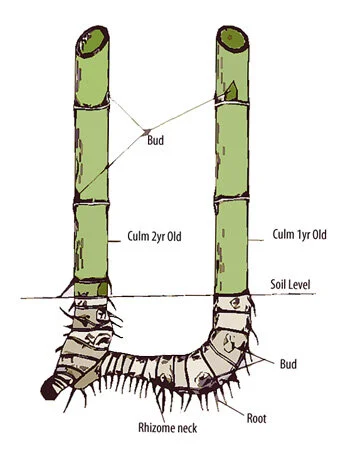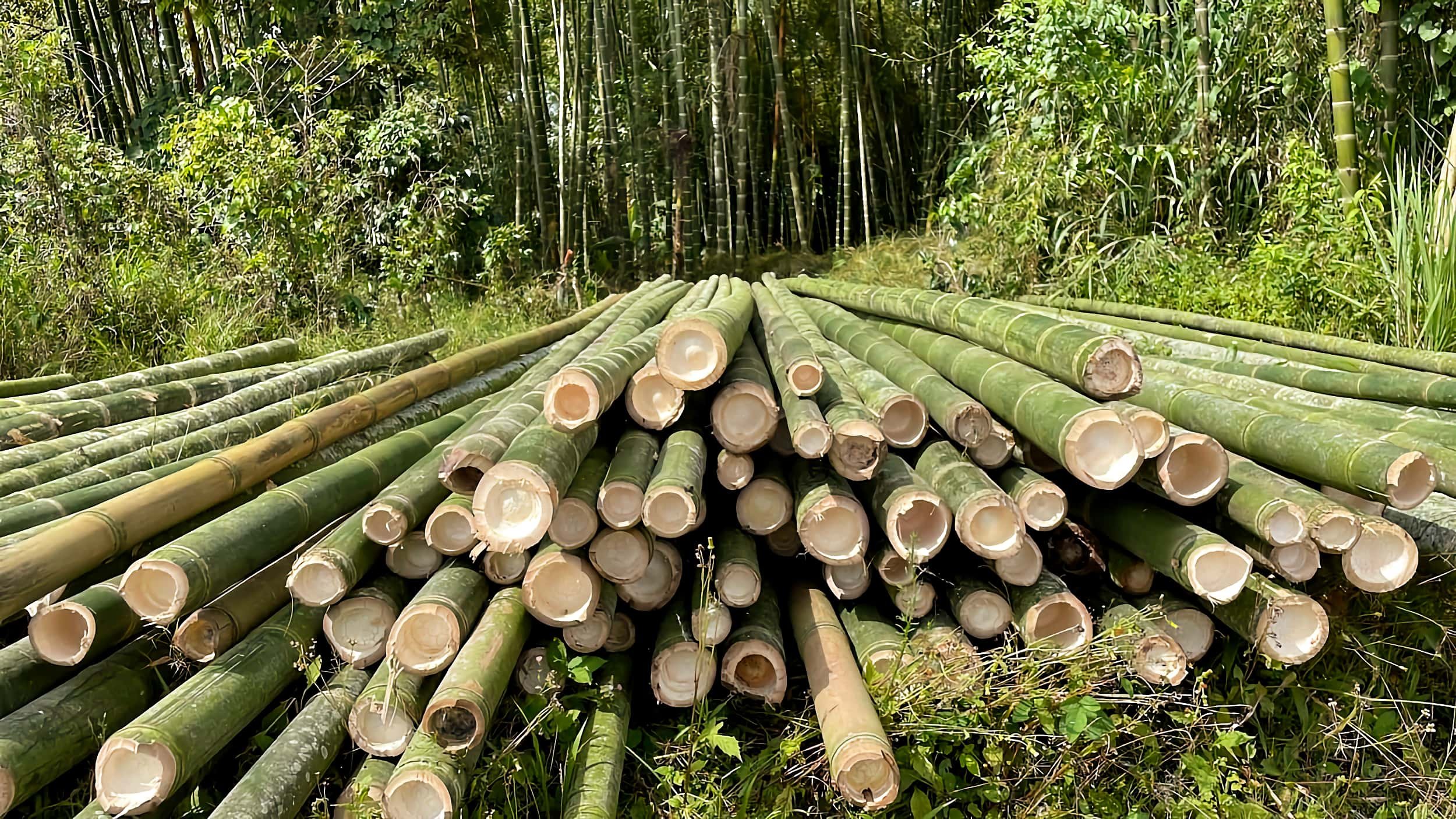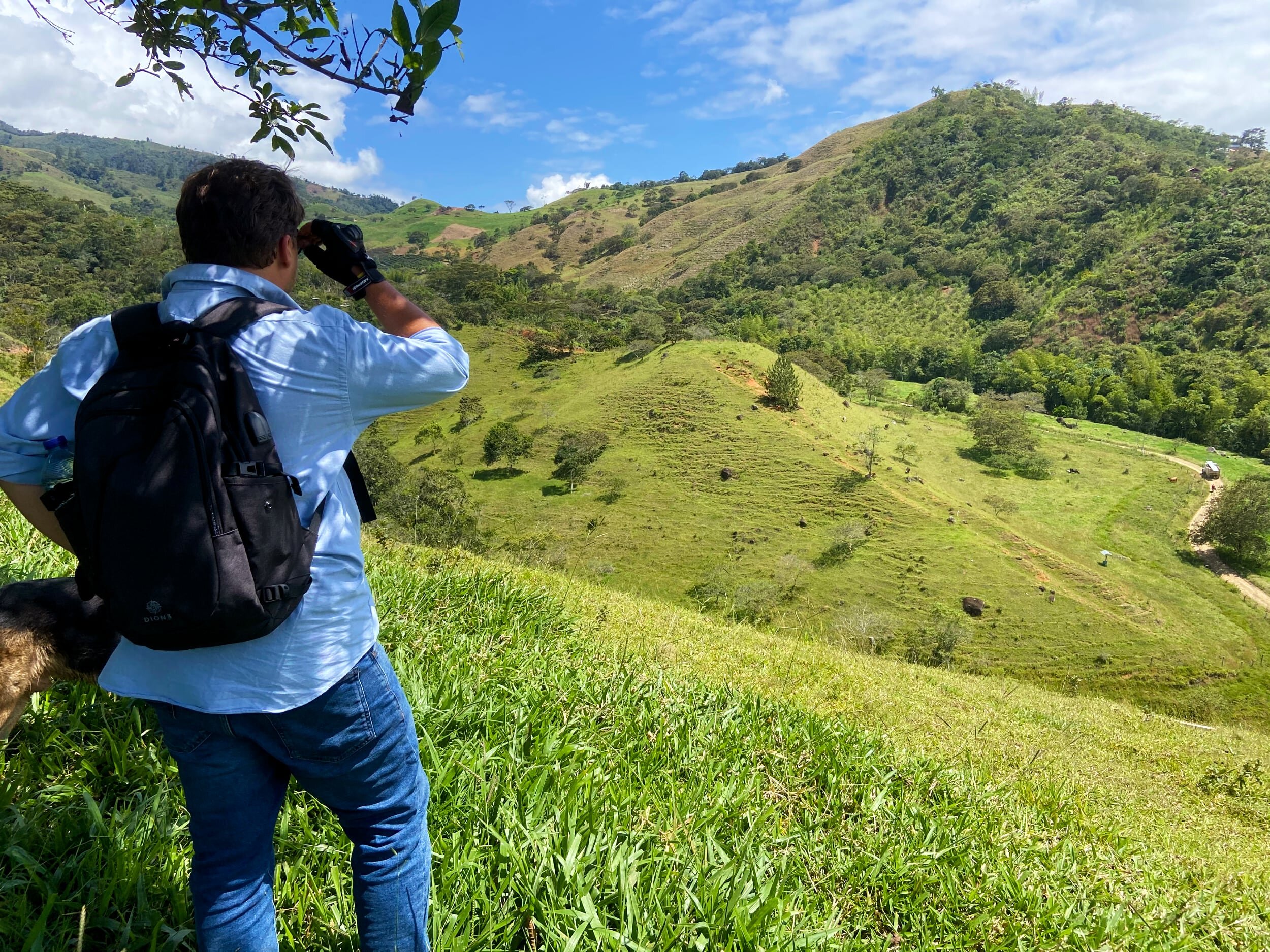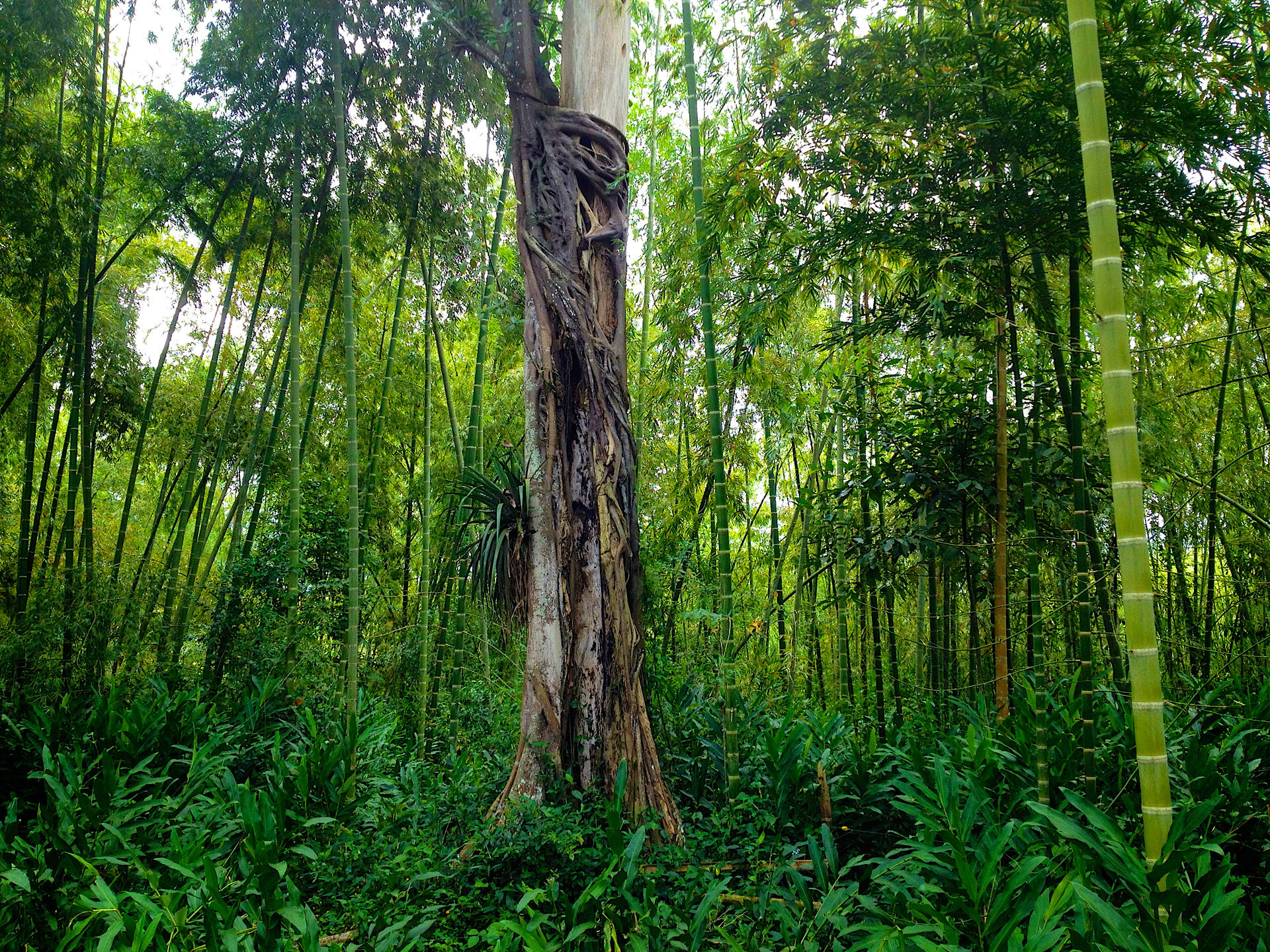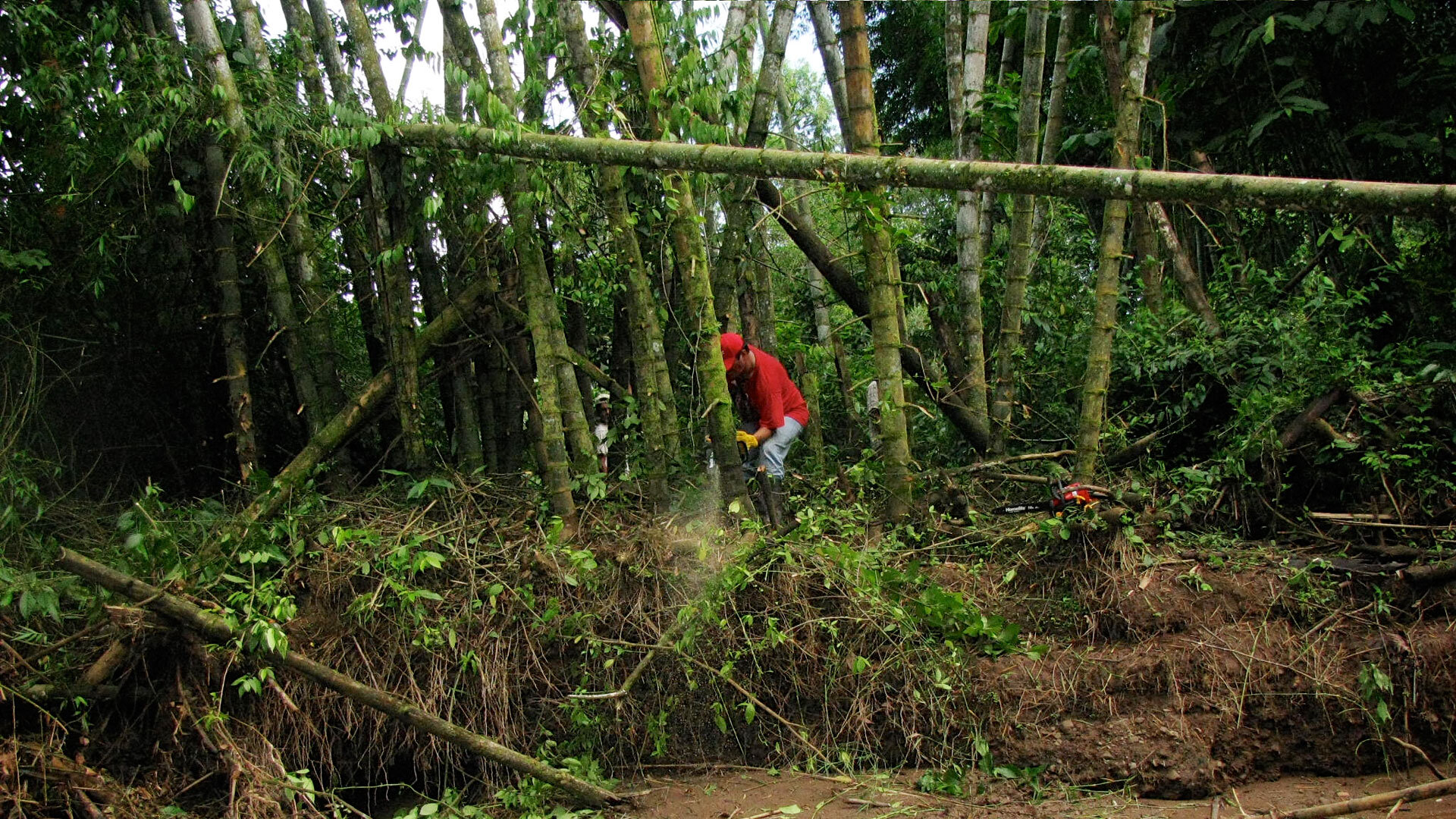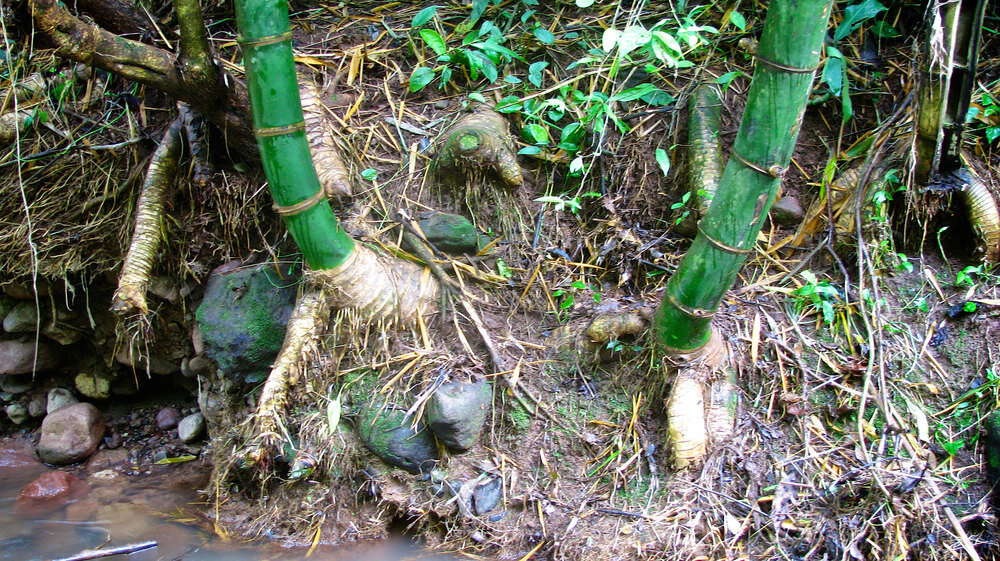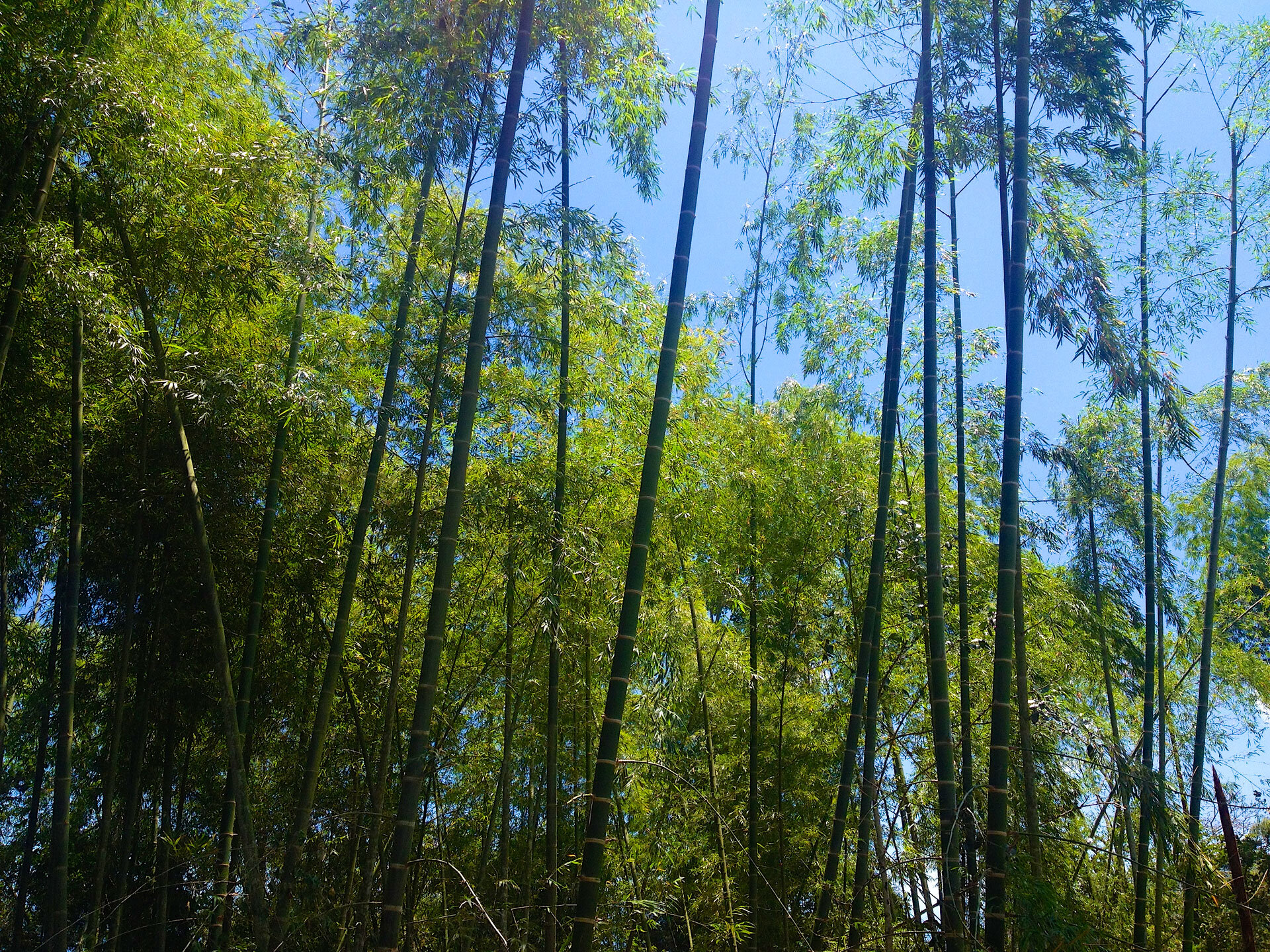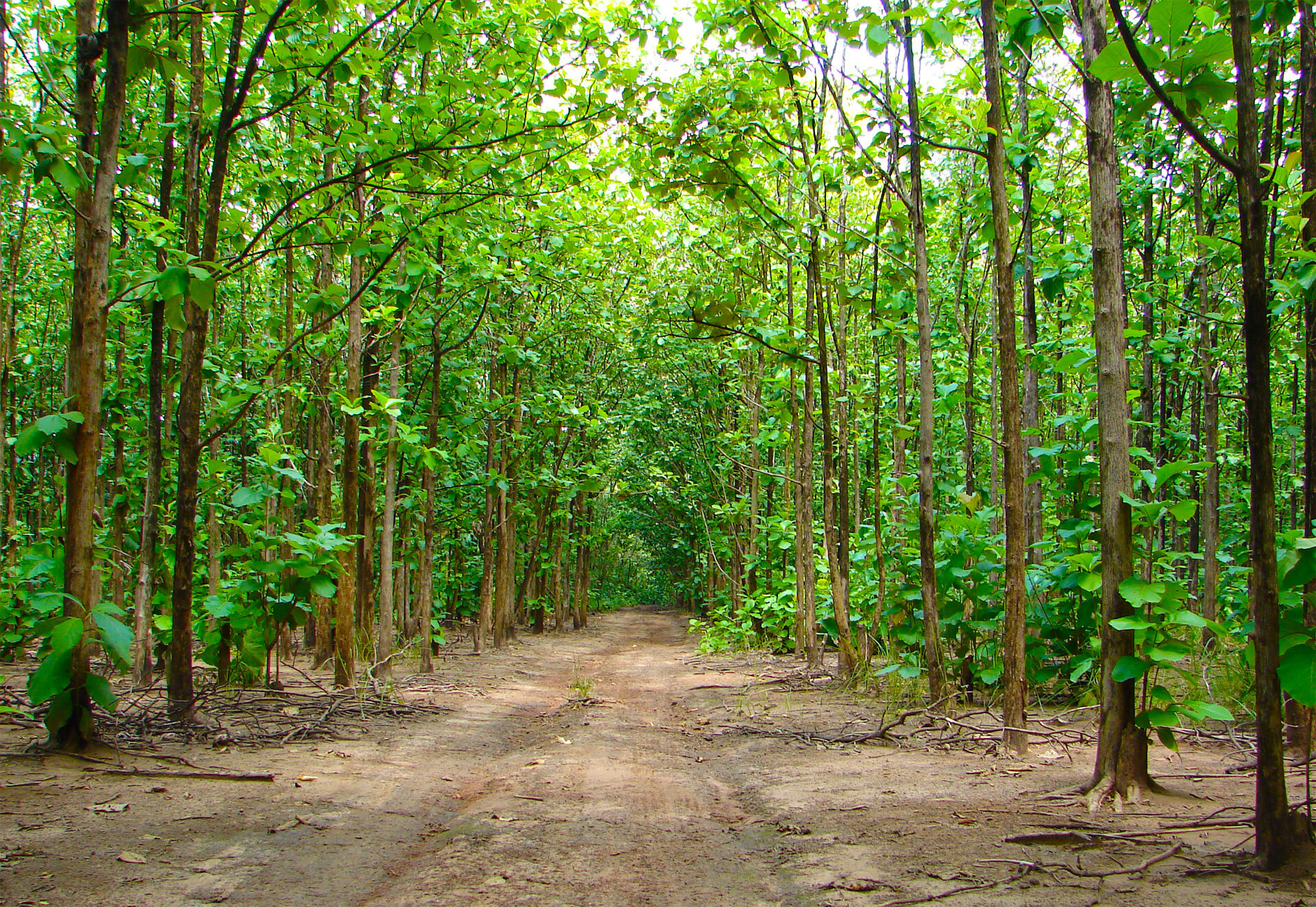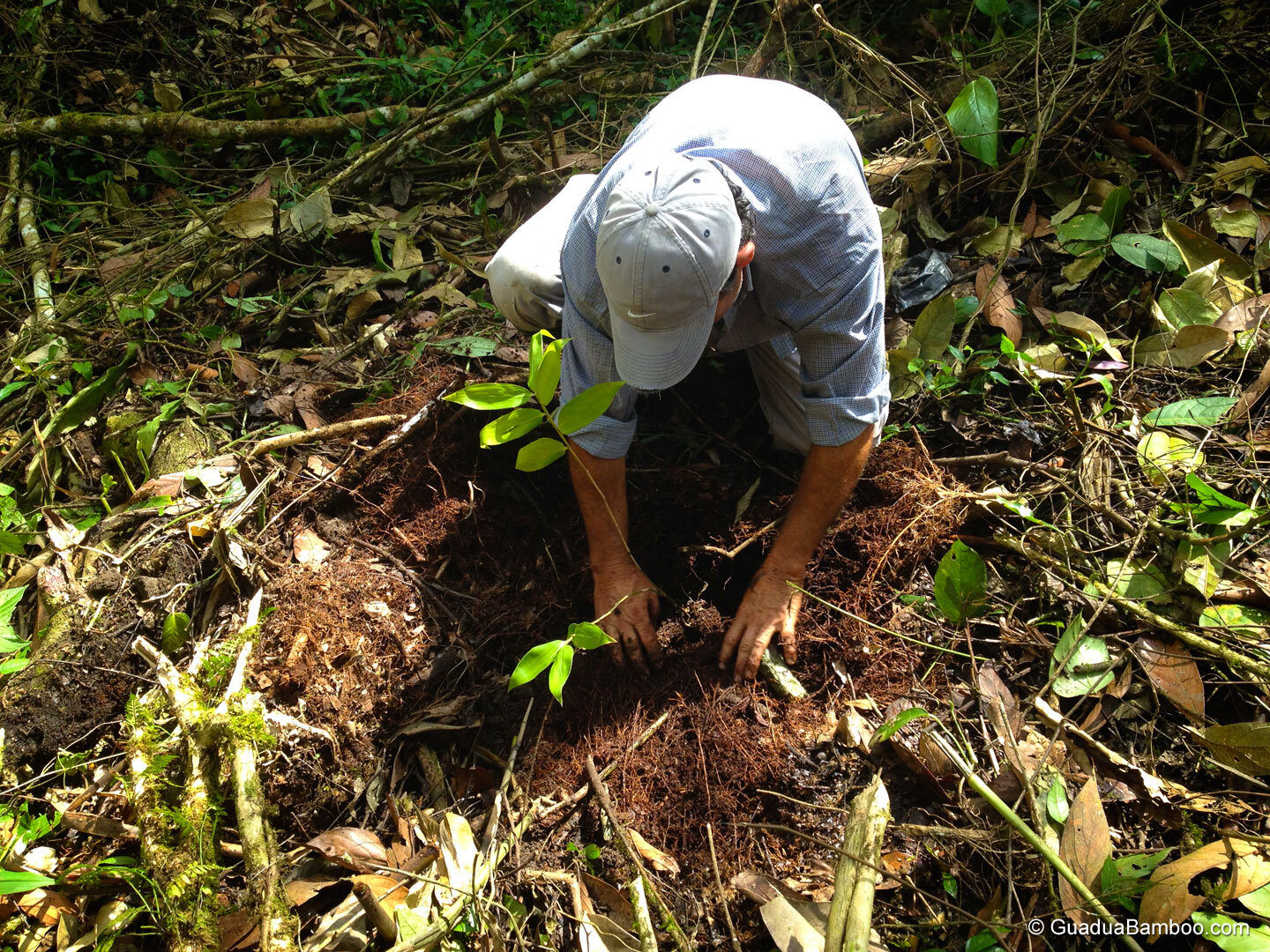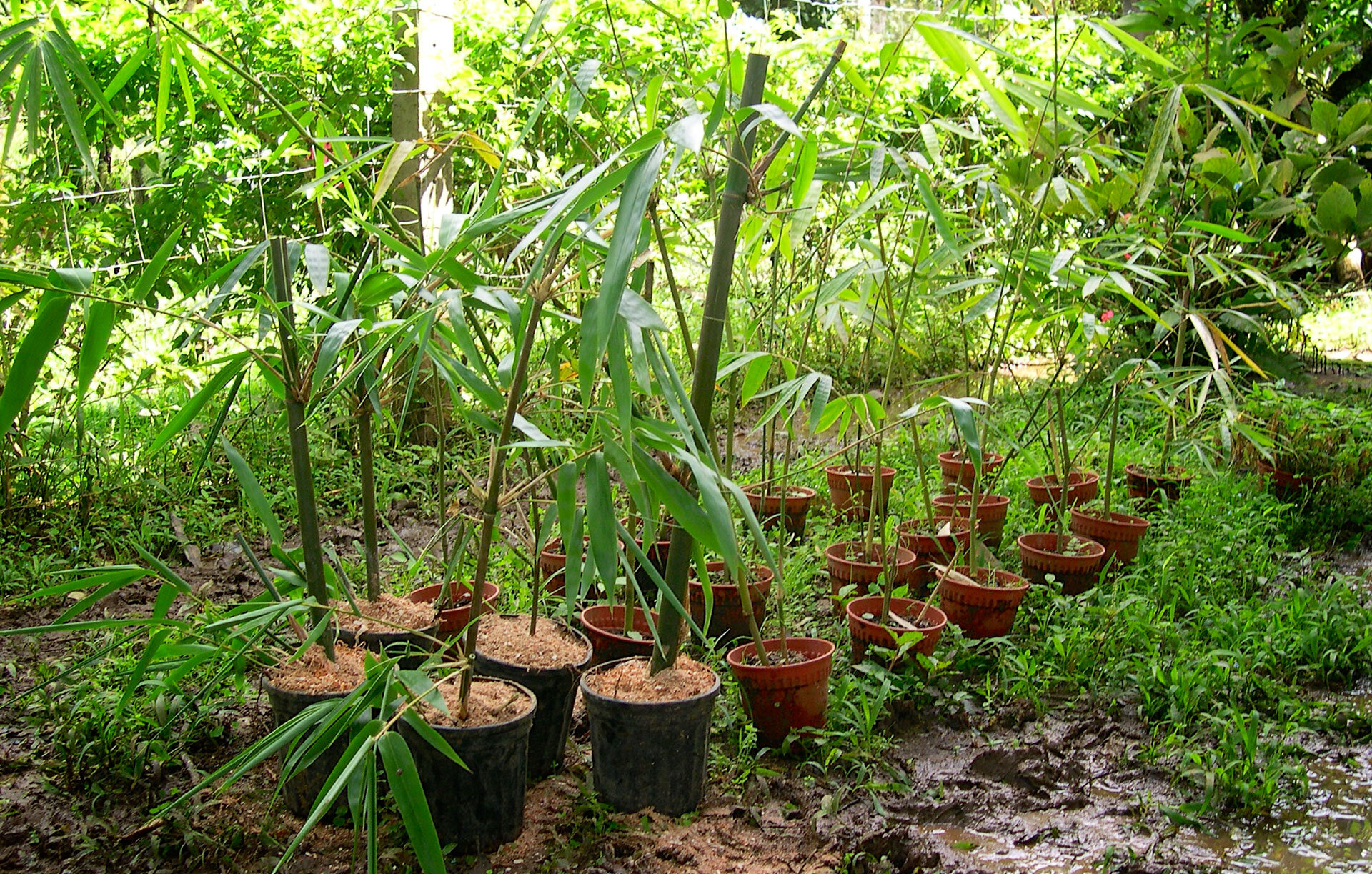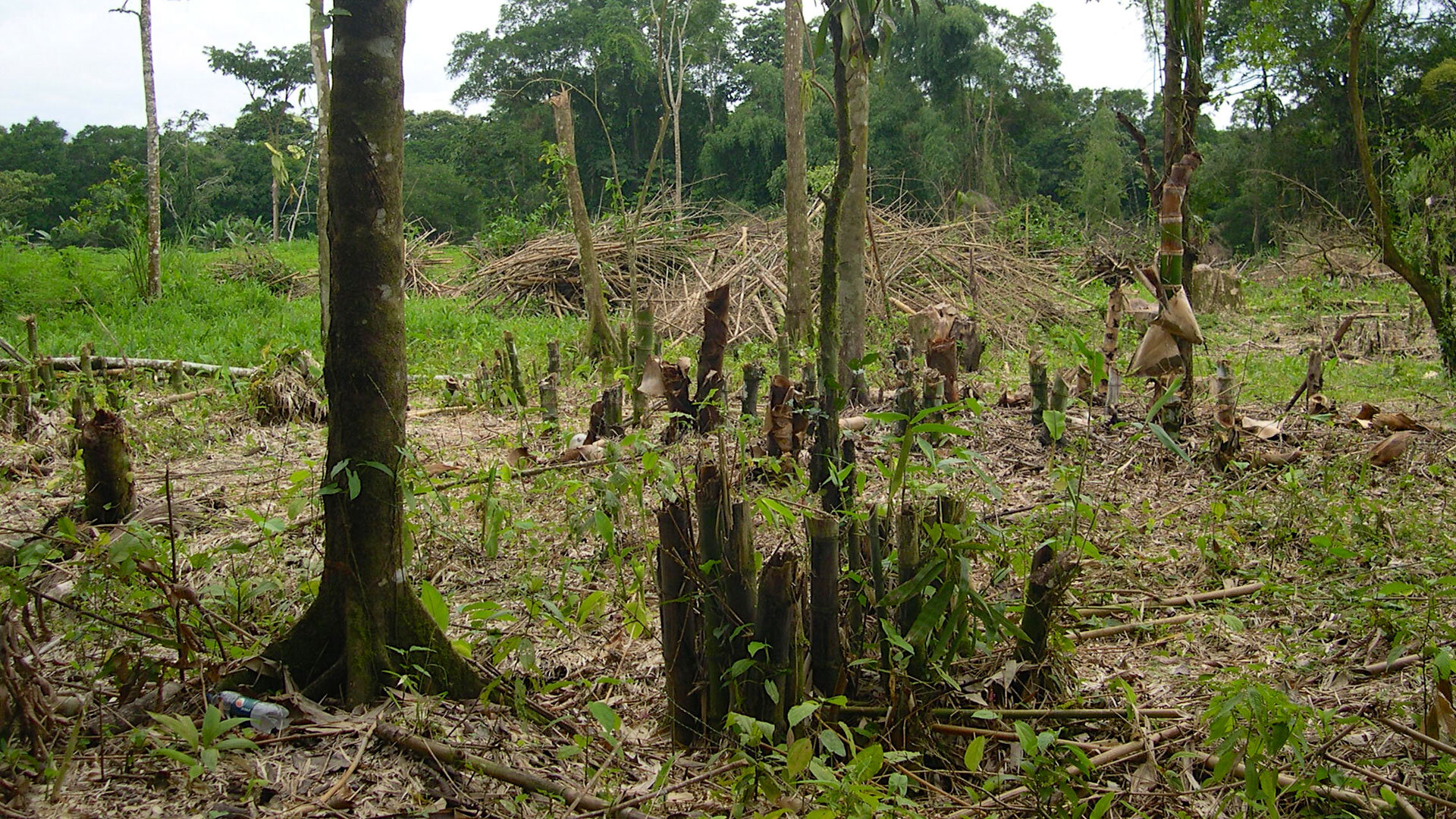Bamboo Rhizome Propagation
Bamboo rhizome propagation or offset propagation is a traditional vegetative propagation method, and perhaps the most commonly used propagation technique for bamboo. However, it is only practicable for cultivating a few clumps due to the extensive labor and cost this technique requires.
What is a Bamboo Offset?
A bamboo offset is the lower part of a single culm usually with 3-5 nodes (i.e. about 1 to 1,5m) with the rhizome basal and roots attached. It has a high rate of success because, basically, a complete plant system is being transplanted.
Obtaining Bamboo Offsets
To ensure a high survival rate for the bamboo rhizome, timing of extraction plays a crucial role. Offsets are best collected and planted from February to April, which is just before rainy / growth season. In this period the food and nutrient reserves in the rhizome are at their peak. This will help sustain the new plant so that they are capable of establishing new roots and transfer these food reserves to the new shoots during rainy / growth season.
If rhizomes are collected later, in the late rainy season after the new growth has started, they usually fail to establish.
How to obtain a bamboo offset:
Collect the rhizome from a healthy parent clump.
For thick walled bamboo species: Select a 1-2 year old culm, and cut off the top portion at about 1 to 1,5 m height (3 to 5 nodes from ground level bearing viable branch buds).
For thin walled bamboo species: Select a rhizome assembly with 2 or 3 offsets connected to each other.
The rhizome attached to this culm must be carefully separated at the rhizome neck. Do not damage the rhizome and attached roots when digging out the offset.
The underground rhizome and roots of the offset should be immediately wrapped in banana leaves, gunny bags or sacking containing with moist sawdust or straw for transportation.
Bamboo in cut condition desiccate and dries up very quickly. Cover the top of the culm with a poly bag or soil and cow dung mix, to prevent desiccation.
Transport the offsets to the planting area or nursery, as soon as possible.
Transplanting Bamboo Rhizomes
In tropical to subtropical regions rhizomes are transplanted just before the rainy season. Any prevailing drought has to be avoided by watering, otherwise survival will be significantly lower.
Before transplanting bamboo rhizomes, dip / drench the rhizome in a fungicide solution like Bavistin (or similar fungicide), appropriately diluted at 1 gram per liter.
Dig a pit of 50 x 50 x 50 centimeters as a norm for medium-sized bamboos. Smaller pit sizes will do for smaller species, and larger bamboos like will need bigger pits.
The dug-out soil should be mixed with farm yard manure and / or a chemical fertilizer.
Transplant the bamboo offset vertically in the pit.
Preferably leave the top of the culm covered with polyethylene bag and cavity filled with water to prevent drying. Alternatively, cover the cut end using soil and cow dung mix.
In case of prolonged dry weather, daily watering is required for new plantations.
Eliminate weeds around the newly transplanted rhizome or add sufficient mulch.
Limitations of Bamboo Rhizome Propagation
Although the survival rate of bamboo rhizome propagation can be 100%, it is not a suitable propagation method to develop large scale plantations for the following reasons:
Offsets are bulky and heavy to carry (they can weigh up to 30–35 kilograms).
Extraction, packing and transportation of these bulky rhizome offsets is time-consuming, labor intensive, and therefore expensive.
Offset availability can be limited to 2-3 per clump. If more are excavated the regeneration of the parent clump can be lost. Therefore, availability of offsets in large number is limited.
Damage to rhizome buds during extraction and transportation often leads to failure of propagation.
Source: R.L. Banik, Manual for Vegetative Propagation of Bamboos. INBAR


